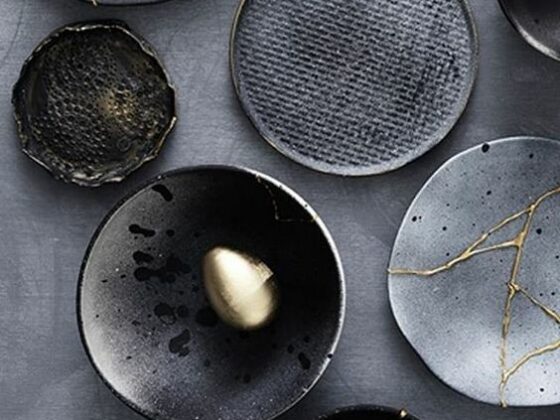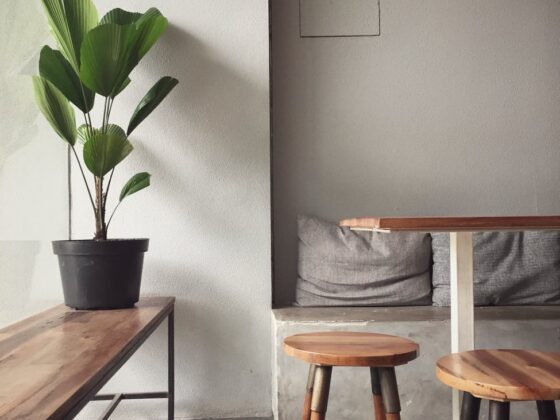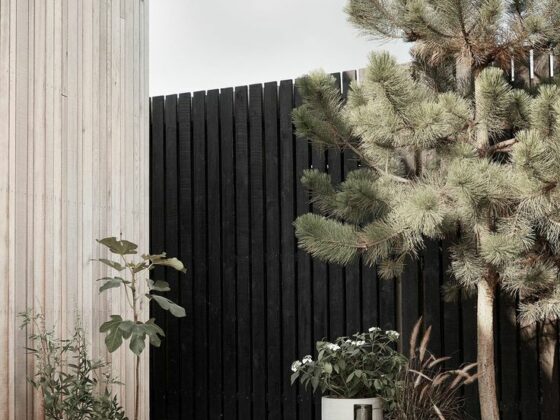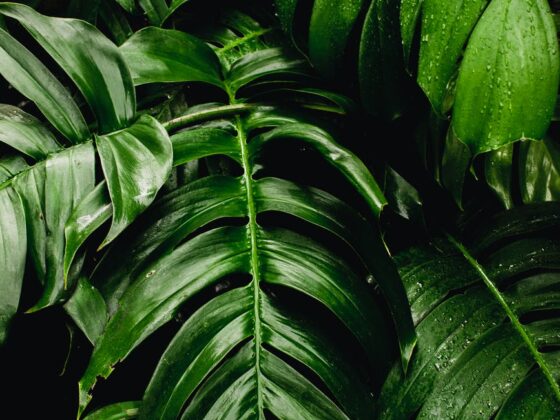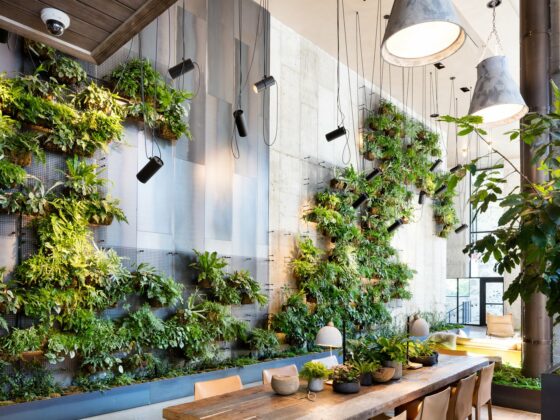Table of Contents
This article contains affiliate links for which I may receive a small commission, at no additional cost to you, should you decide to make a purchase by using them. Learn More
What Are Succulents?
Succulent plants have thick, water-retentive leaves that are perfect for arid climates and dry soil conditions. These plants store water in their leaves, roots, and stems to survive in unfavorable conditions.
This characteristic makes them excellent for indoor environments, and if you’ve been meaning to try your hand at low-maintenance plants to spice up your rooms, then here’s a list of some easy to take care of succulents:
1. Echeveria
This cute succulent is shaped like a budding rose and is an excellent way to spruce up your dressers, sideboards, end tables, work desks, and more.
Why you want it: Echeveria succulents are great for improving your focus and keep the surrounding air clean. They are non-toxic and safe to keep around pets and children as well.
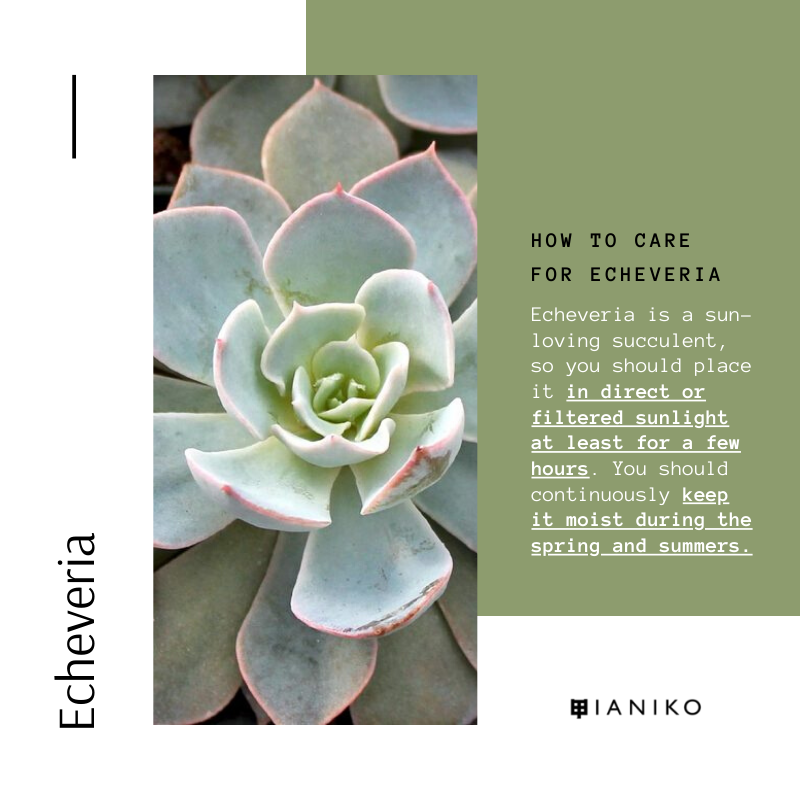
How to care for it: Echeveria is a sun-loving succulent, so you should place it in direct or filtered sunlight at least for a few hours. Keep it away from the cold. You should continuously keep it moist during the spring and summers while occasionally water it during the winter.
2. Aloe
Aloe is one of the most well-loved succulent plants you’ll ever come across. They have so many benefits and tend to look pretty unique when featured in interior designs.
Why you want it: Aloe succulents have remarkable antibacterial properties. They can be used in various skin treatments, are great for healing burns, and even help with constipation. You can put it on your bookshelves or windowsills.
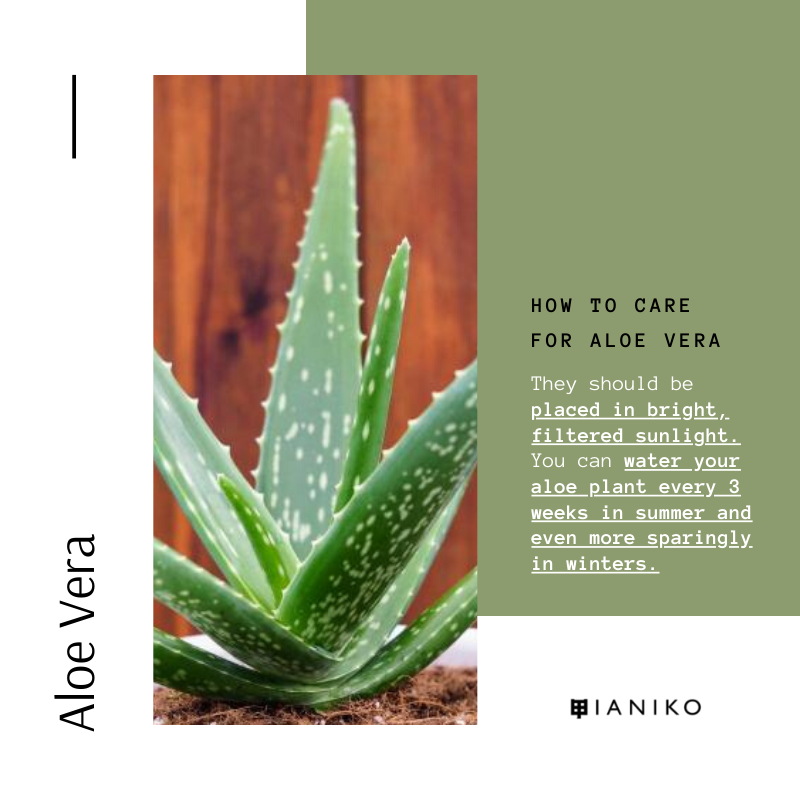
How to care for it: They should be placed in bright, filtered sunlight. You can even use grow-lights. They flourish in cool to humid temperatures of 13-27 degrees Celsius. You can water your aloe plant every 3 weeks in summer and even more sparingly in winters.
3. Agave
Agave succulents are bold and bloom wide. They’re lovely and great for making a statement in your interior designs.
Why you want it: The leaves of an agave succulent have antiseptic and anti-inflammatory qualities. It’s a healing plant, so you can utilize it for its medicinal uses while featuring it as a focal point in your home interiors.
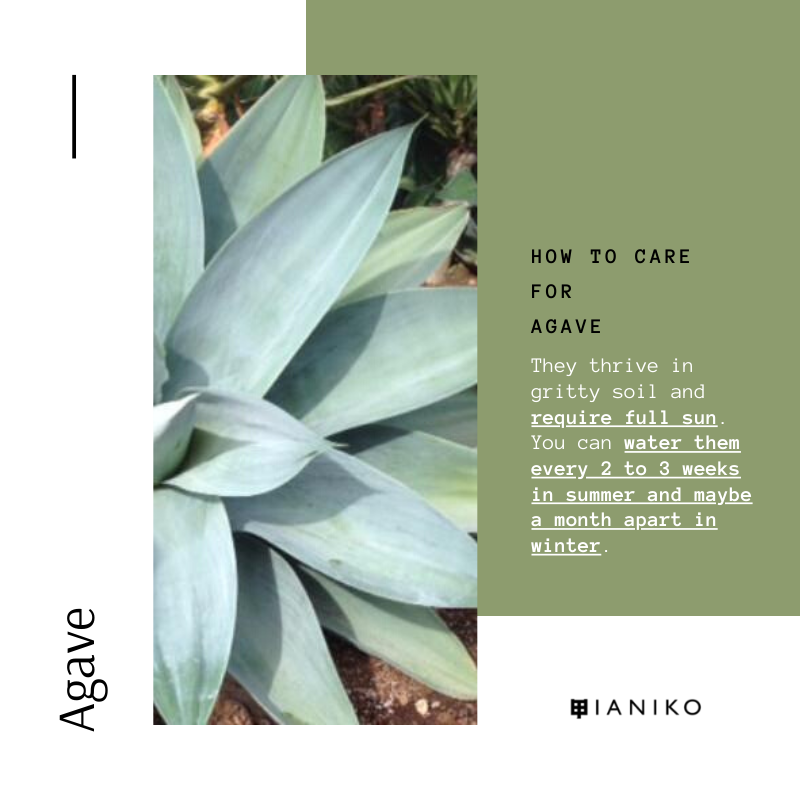
How to care for it: It’s best to plant agave succulents in unglazed pots to help with evaporation. They thrive in gritty soil and require full sun. You can water them every 2 to 3 weeks in summer and maybe a month apart in winter.
4. Sansevieria
Sansevieria succulents are tall and beautiful. They have a stylish, compact disposition, which makes then excellent bookshelf and table centerpieces.
Why you want it: This succulent plant is excellent for elevating the quality of your indoor air. It absorbs carbon monoxide and helps make you feel more focused.
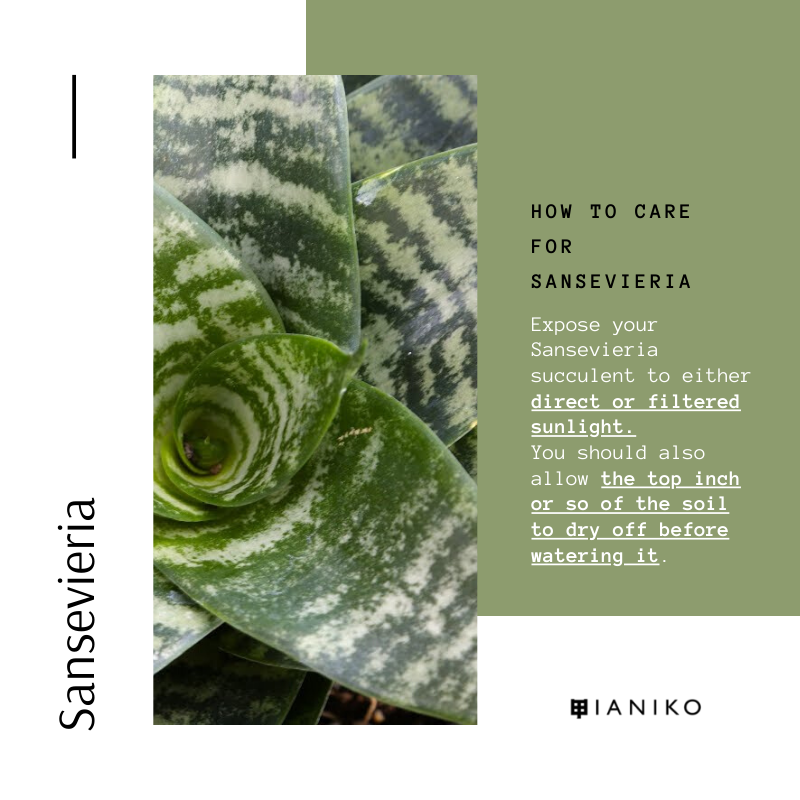
How to care for it: You need to expose your Sansevieria succulent to either direct or filtered sunlight, so placement matters a lot. You should also allow the top inch or so of the soil to dry off before watering it.
5. Graptopetalum (Ghost Plant)
Featuring a beautiful trail of jade rosettes, this succulent plant would make a trendy addition to your home interiors.
Why you want it: The aesthetic properties of this succulent are its most attractive qualities. You can feature them as the statement piece of your coffee, dining, desk, or end tables.
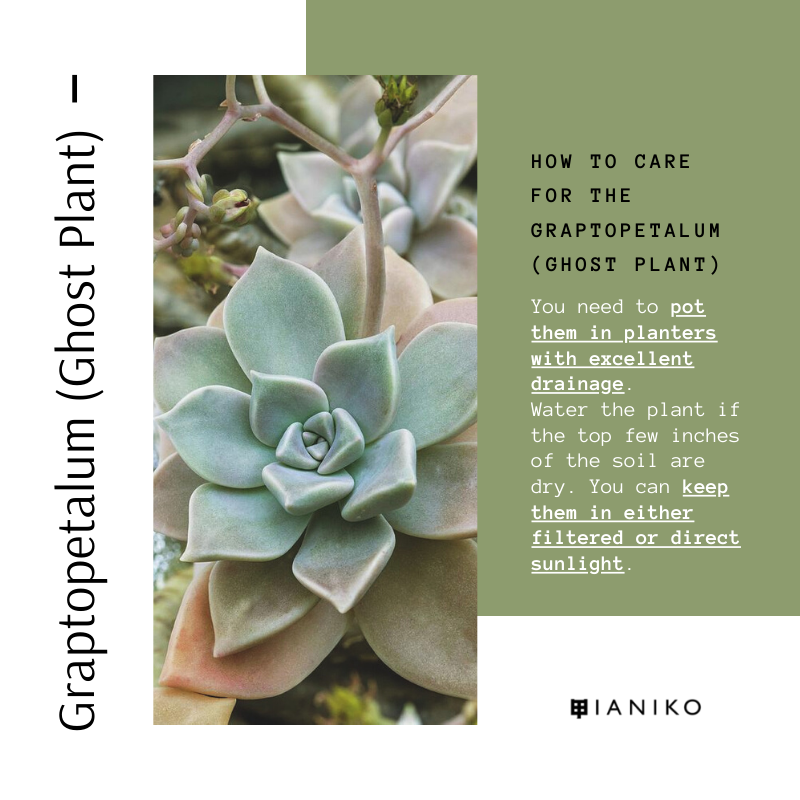
How to care for it: A container bound graptopetalum plant requires gritty soil to thrive. You also need to pot them in planters with excellent drainage. You should water it if the top few inches of the soil are dry. You can keep them in either filtered or direct sunlight.
6. Haworthia (Zebra plant)
These dainty succulents are highly fuss-free and super easy to maintain.
Why you want it: Aside from the low-maintenance of these succulents, they’re also non-toxic, which means they’re unharmful to pets and children. You can also give them as gifts.
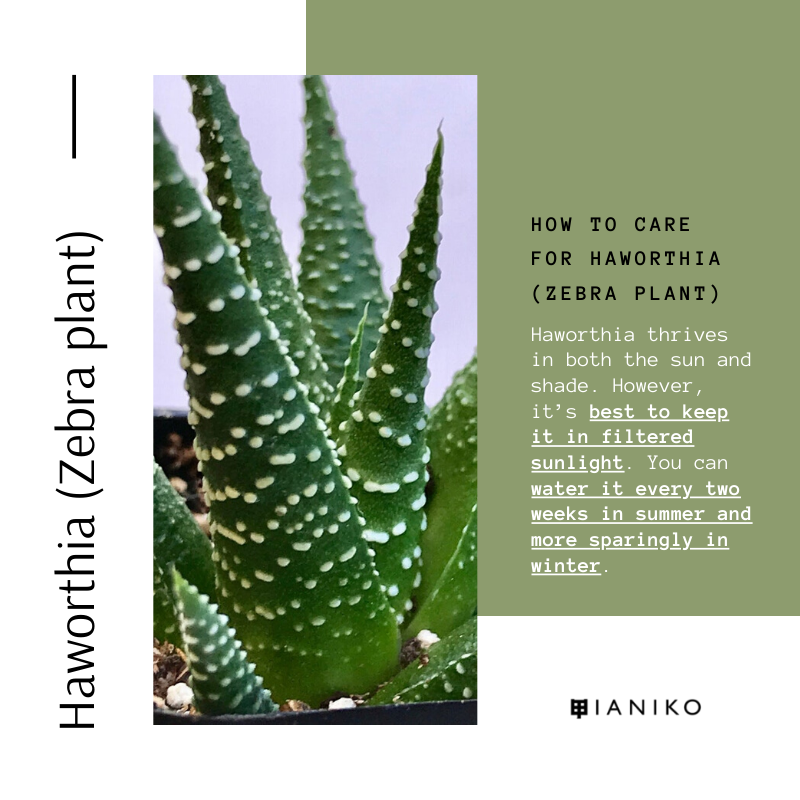
How to care for it: Haworthia is an adaptable plant, so it can thrive in both sun and shade. However, it’s best to keep it in filtered sunlight. You can water it every two weeks in summer and more sparingly in winter.
7. Sedum
This adorable succulent plant is the perfect way to brighten your home interiors in a fuss-free and visually pleasant way.
Why you want it: Sedum succulents look fresh and visually pleasant. They make a great interior design accessory. You can feature them on bookshelves, accent tables, or even DIY decorative tray settings.
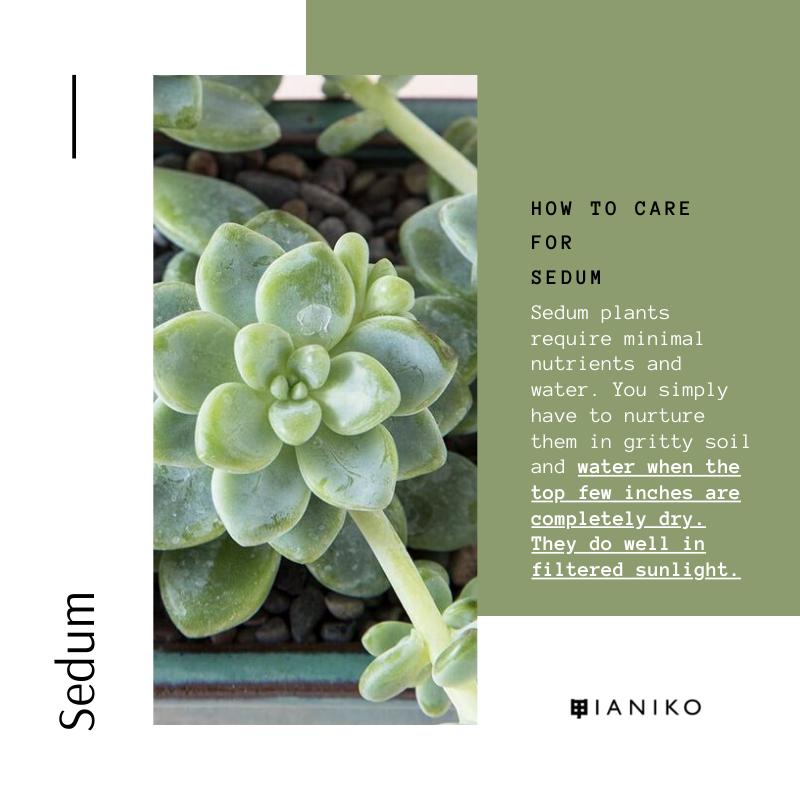
How to care for it: Sedum plants require minimal nutrients and water. You simply have to nurture them in gritty soil and water when the top few inches are completely dry. They do well in filtered sunlight.
8. Gasteria (Little Warty)
This beautiful little succulent would make a fresh statement piece. The unique composition of its leaves, along with the expressive freckles of different green hues, makes this plant an immediate attraction.
Why you want it: Little Warty is a beautiful succulent. It’s got a waxy sheen that immediately draws the eye. You can use this succulent in several table centerpiece and DIY tray settings.
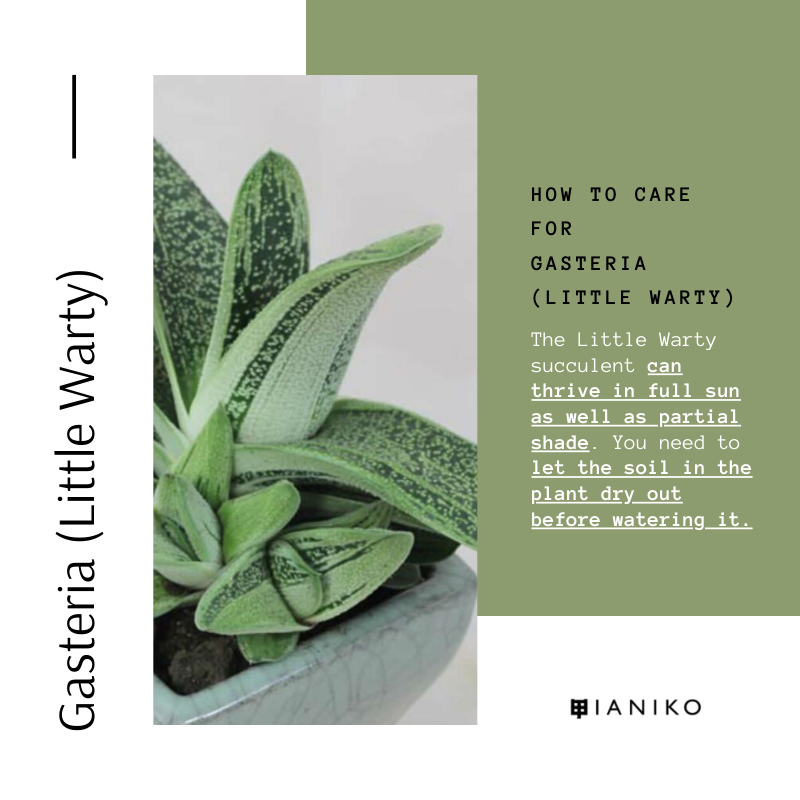
How to care for it: The Little Warty succulent can thrive in full sun as well as partial shade. You need to let the soil in the plant dry out before watering it.
9. Crassula Marnieriana (Jade Necklace)
This succulent is unique and features thick, jade green, bead-like leaves – hence the name. It would make exquisite ornamentation in your interiors.
Why you want it: This plant is excellent for treating nausea and diarrhea. It’s also great for purging the intestines. It’s distinguished looks also make it a fantastic table or bookshelf accessory.
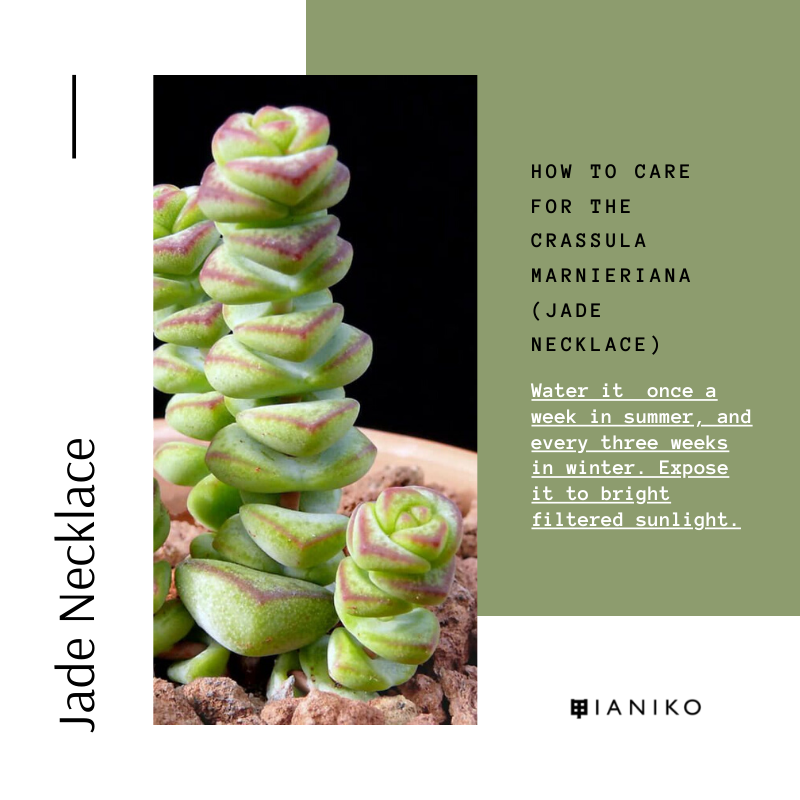
How to care for it: Keeping track of your watering is key for caring for the Jade Necklace succulent. You should do it once a week in summer, and every three weeks in winter. Expose it to bright filtered sunlight for the best effect.
10. Sempervivum (Houseleek)
The bloom of this succulent plant mimics a sunflower. Its leaves tip in a deep plum/burgundy hue while the middle is a contrasting white, which makes it even more attractive.
Why you want it: There are many medical benefits of the Sempervivum succulent, the foremost of which is treating nervousness, ear infections, and reducing digestive cramps. It’s also quite easy on the eyes and would make an excellent desk mate.
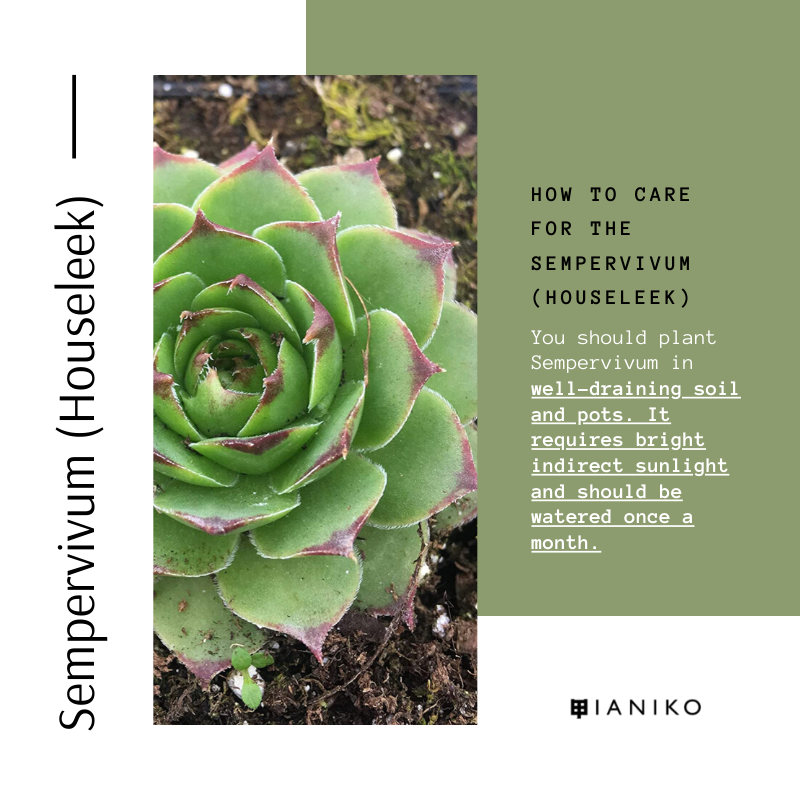
How to care for it: You should plant Sempervivum in well-draining soil and pots. It requires bright indirect sunlight and should be watered once a month.
So these are some great indoor succulents that can brighten up your spaces. We hope this list helps you choose the perfect one.


